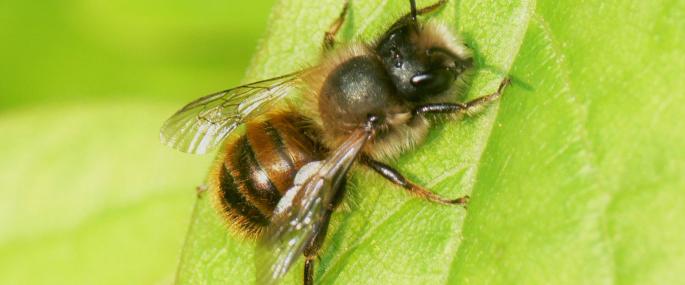The Red Mason Bee is a small, common bee which nests in hollow plant stems, in holes in cliffs, and in the crumbling mortar of old buildings. It is a solitary bee so, after mating, each female builds its own nest; she lines each 'cell' with mud and pollen and lays a single egg in each until the cavity is full. The larvae hatch and develop, pupating in autumn and hibernating over winter. The Red Mason Bee is on the wing from late March, and feeds solely on pollen and nectar.
Solitary bees and wasps are important pollinators for all kinds of plants, including those which we rely on like fruit trees. The Wildlife Trusts recognise the importance of healthy habitats to support all kinds of species throughout the food chain, so look after many nature reserves for the benefit of wildlife. You can help too: encourage bees and wasps into your garden by providing nectar-rich flower borders and fruit trees. To find out more about gardening for wildlife, visit our Wild About Gardens website: a joint initiative with the RHS, there's plenty of facts and tips to get you started.
